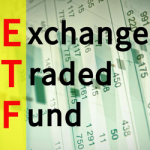Exchange-traded funds (ETFs) are forms of securities that track sectors, indexes, commodities, or other assets and may be bought and sold on a stock exchange like any other stock. An exchange-traded fund can be set up to track anything from a single commodity’s price to a big and diverse group of securities. ETFs can also be constructed to follow a certain investment strategy.
The SPDR S&P 500 ETF (SPY), which follows the S&P 500 Index, is a popular example. An exchange-traded fund can hold a variety of investments, such as stocks, bonds, commodities, or a combination of them. An ETF is a marketable security, which means it contains a price that can be purchased and sold easily.
ETFs are called exchange-traded funds because they trade on an exchange like stocks. As shares are purchased and sold on the market, the value of an ETF’s shares fluctuates during the trading day. Mutual funds, on the other hand, are not traded on a stock exchange and only operate once daily after the markets shut. Furthermore, as compared to mutual funds, exchange-traded funds are more liquid and cost-effective.
Table of Contents
Investing Cash in ETFs
ETFs, like stocks, are a type of investment that holds numerous underlying assets rather than just one. An ETF is a common alternative for diversification because it contains a variety of assets.
An exchange-traded fund may own hundreds or thousands of equities from a variety of industries, or it might be focused on a single area or industry. Many funds are only focused on the United States, while others have a global vision. Banking-focused ETFs, for example, would hold stocks from a variety of banks across the market.
What Are the Types of ETFs?
Investors can choose from a variety of ETFs that may be used to generate income, speculate on price gains, and hedge or partially offset risk in their portfolios. ETFs come in a variety of shapes and sizes, including:
These may include corporate bonds, government bonds, or municipal bonds (local and state bonds).
This ETF invests in foreign currencies such as Euros.
Industry ETFs allow you to track specific industries such as the banking, oil, or technology sector.
These enable you to invest in commodities such as gold or crude oil.
This ETF attempts to receive gains from stock declines via shorting stocks. Shorting occurs when an individual sells a stock as they expect a decrease in the value, and they repurchase it at a lower price.
However, many inverse ETFs are exchange-traded notes (ETNs), not actual ETFs, as investors should know. ETNs are similar to bonds, but they trade like stocks and are backed by the banks. If you are not sure if an ETN is ideal for your portfolio, talk to your broker.
The majority of ETFs are set up as open-ended funds in the United States and are governed by the Investment Company Act of 1940 unless subsequent rules have changed the regulatory requirements.
Additionally, the number of investors who can participate in an open-end fund is unrestricted.
How Do You Buy and Sell an ETF?
When trading EFTs, people do this via an online broker and traditional broker-dealer. There is a wide variety of brokers to choose from, and many offer various characteristics. Robo-advisors are an alternative to standard brokers, and they often use ETFs in their investment offers.
What Are the Advantages and Disadvantages of ETFs?
An ETF offers reduced average costs because it would be costly for an investor to purchase all of the stocks in an ETF portfolio individually. Due to the fact that investors only make a few trades, they only need to complete one transaction to purchase and one transaction to sell, resulting in lower broker commissions. Every trade is usually charged a commission by the broker. Several brokers even provide no-commission trading on some low-cost ETFs, significantly lowering the costs for the investor.
The expense ratio of ETFs is the cost of operating and managing the fund. As they mirror an index, ETFs often have low expenses. If an ETF follows the S&P 500 index, for example, it may hold all 500 equities in the index, rendering it a passively managed fund with less time commitment. Not all ETFs, however, follow an index in a passive way.
The benefits include:
- The diversification provides risk management
- One gets access to various stocks across multiple industries
- There are fewer broker commissions and lower expense ratios
- Specific ETFs exist that focus on targeted markets
The disadvantages are as follows:
- The lack of liquidity negatively impacts transactions
- There are higher fees associated with actively managed exchange-traded funds
- One receives limited diversification with a single industry focus ETF
Practical Examples of ETFs
Various ETFs follow an index of stocks which create a wide portfolio, whereas others focus on specific markets. A few well-known examples of available ETFs on the market include:
These are funds in which people hold physical gold and silver.
The oldest existing and most commonly known ETF follows SPY.
These track the various individual markets.
If you are looking to track the Russell 2000 small-cap index, this is the ETF for you.
Commodity industries such as natural gas and crude oil are represented by these.
This follows the Nasdaq 100, which generally contains various technology stocks.
The DIA represents the 30 available stocks of the Dow Jones Industrial Average.
The Bottom Line
ETFs operate similarly to stocks as they are baskets of securities that people can buy and sell on exchanges. The prices of ETFs fluctuate constantly throughout the day, and various types of these funds exist that each includes their own advantages and disadvantages. Are you going to trade ETFs?
WeInvests is a financial portal-based research agency. We do our utmost best to offer reliable and unbiased information about crypto, finance, trading and stocks. However, we do not offer financial advice and users should always carry out their own research.
Read More







